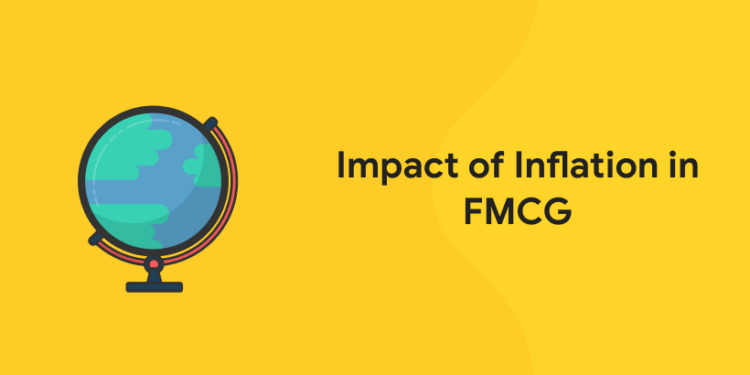Inflation has impacted many sectors all across the world. FMCG (Fast Moving Consumer Good Sector) is one among these sectors that has been impacted by inflation. The main cause of inflation is because of the Russia-Ukrainian crisis, increase in fuel price and the raise in global interest rate. However, the manufactures continued developing and producing goods, still there is no adequate demand among consumers. Where, inflation was not reflecting on retail price. Yet, businesses had not recovered from the drift of inflation to consumers. So finally, the FMCG companies decided to raise the prices and to transfer responsibility of inflation to consumers because the companies cannot withstand it any longer. Here in this article we have included a layout on the FMCG sector and the causes of inflation in FMCG. Read the complete article for better understanding.
Click Here! For the latest Banking Courses!
Effects of Inflation
The Central banks across the world have started to raise the interest rate. Most among them followed a diminution monetary policy, which means they commenced by taking money over the economy. If the reduction of equity results from personal income, then it might prevent consumers from spending, eventually interfering with economic growth and leading to substantial gaps in output. However, for FMCG companies high price means; a) Low Profit Margins b) High Cost of Transportation and Supply chain c) Increased Cost of Storing d) Reduction in Volumes of Goods Sold
The Indian Reserve Bank in its latest Monetary Policy Review passes over inflation to upkeep stock market growth undefiled. Where, the Central banks choice of first casualty is distinctly possible to be the FMCG sector.
The 2019 pandemic hit has interrupted varying India’s income trends, by looping with above 6 percent retail inflation. In the coming quarters, people are expected to see their spending on non-essential minimarkets.
Already the FMCG companies have reported the drop in third quarter volume growth of FY22. A recent report by NielsonIQ says that demand in the rural sector had a strike, with a 2.9 percent decline in volume growth.
In India, the retail inflation rose to a seven month high of 6.01 per cent in January, the former RBI governor Raghuram Rajan’s title period sets the upper tolerance level. The rise was mainly due to high food inflation, which climbed to a fourteen month high of 5.43 per cent, with a high base.
In January, inflation on wholesale prices narrowed from 13.56 per cent to 12.96 per cent, in a month. It’s been double digits for ten successive months, by adding pressure on consumer expenditure capacity.
During this period, the FMCG firm comes to face the situation of making decisions between margins and volumes. The analysts believed that, protecting margins will later impact company’s volume as the consumers will pause the consumption.
Rising cost does impact FMCG utilization. Commodity inflation impacts every product/service in any way, either directly or indirectly. Currently in rural India, the concern is about drop off. The inflation has been seen in fertilizer and diesel prices. Which discretionary expense for farmers falls down as they require more amount on diesel and fertilizer. Where, they could reduce consumptions in all ways possible. Abneesh Roy, Executive vice-president, Edelweiss Securities Says; FMCG consumption had then taken a hit.
The latest report by ICE360 Survey says that during the period of the 2019 pandemic hit, the income of the poorest fifth which add up to 20 per cent of the Indian household has jumped to 53 per cent in 2020-2021, while comparing their income in 2015-2016. During the same period the annual income of the richest 20 percent of households has rushed to 39 per cent. The fact of wealth congregating over the top 20 per cent does not augur well in India’s consumption sector, which only depends on the spending capacity of the country’s mass.
As per Roy, the FMCG companies working in the lower price units of Rs 1/-, Rs 2/-, Rs 10/- are not able to take price hikes, as a raise in this range would affect demand to a large extent. ‘Companies cut their grammage’. So when they break grammage in 100 gram biscuit/100 gram soap, in accordance with their calculation, that’s a direct impact on demand. Roy says; at present the direct effect of grammage cut is being seen.
Companies such as HUL, Dabur and Britannia have noticed margins being affected due to existing inflation
The 36 percent of FMCG company’s sales emanate from rural India and it’s risky for companies to carry on with rural slowdown. While also in the urban side, people too have turned to use products at low price spectrum, as per Malpani.
HUL reports says, the company had a large drop in volumes, which is even more noticeable in the rural market.
Let’s Conclude
At the end of the article, as per the recent reports; the FMCG companies have come up with a conclusion of rising prices up to 10-15%. Eventually, one can expect a price drop with time. Here we have an interesting example, in the case of India their exports are high all the time, crossing around $400 billion. The fluctuation in USD to INR conversion is higher. Which means more Rupees can be expected from each commodity that we export. Yet, India has not taken advantage of the global shortage of particular commodities. If they do so, the domestic volumes will be balanced. However, it can be possible until FMCG domestic companies act on it.
Download the Entri App! Make your government exam learning easy!













